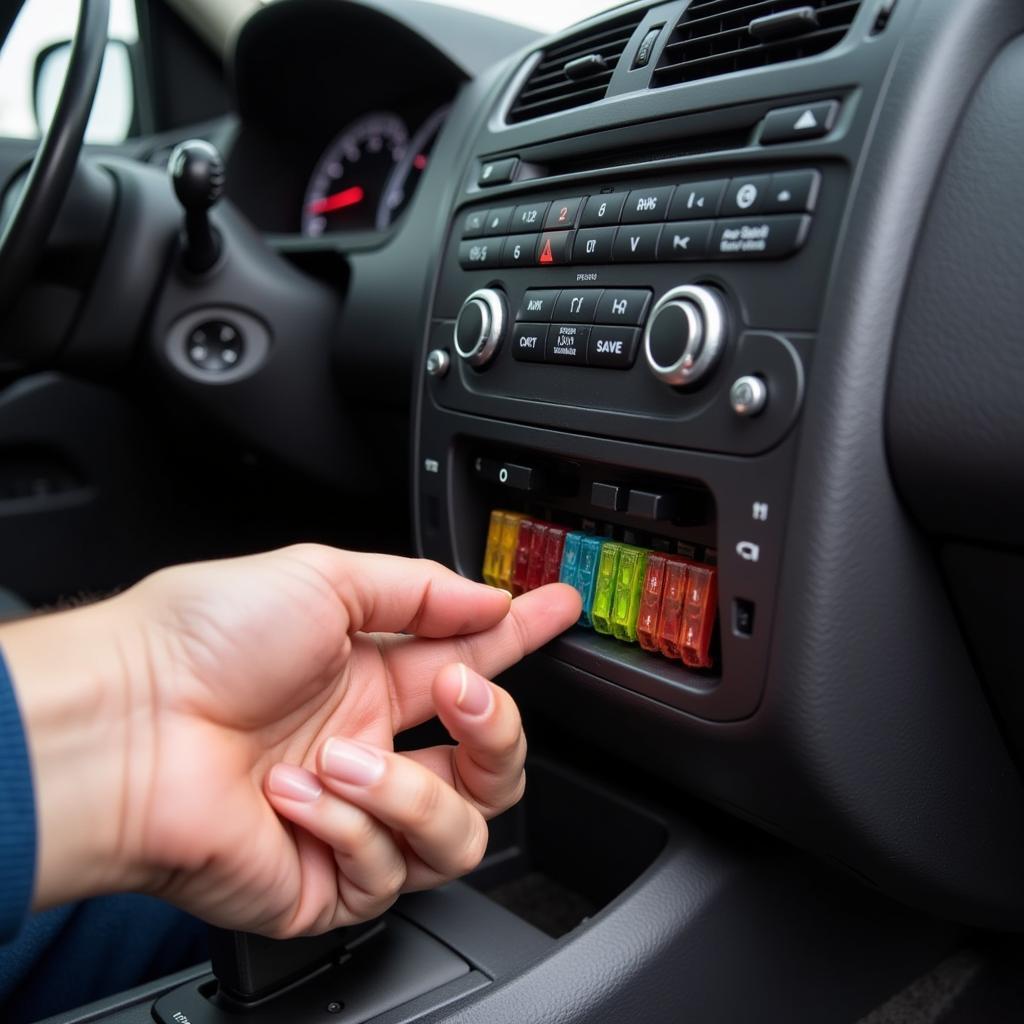Experiencing issues with your car audio system can be incredibly frustrating. Whether it’s static, a complete loss of sound, or intermittent problems, Car Audio Problems can quickly turn your daily commute into a headache. This guide aims to help you diagnose and potentially fix common car audio problems, getting you back to enjoying your favorite tunes in no time.
Common Car Audio Problems and Their Causes
Before we delve into specific solutions, it’s essential to understand the common causes behind these audio issues:
- Loose or Damaged Wiring: This is arguably the most common culprit, especially in older cars where wires can become brittle or corroded. Vibrations from driving can also cause connections to loosen over time.
- Blown Fuse: A sudden surge in power, often caused by a short circuit, can blow a fuse responsible for your car audio system.
- Faulty Head Unit: Your car’s head unit is the brain of your audio system. If it’s malfunctioning, you might experience a range of issues, from a blank screen to complete audio loss.
- Speaker Issues: Speakers themselves can wear out over time, leading to distorted sound, buzzing, or no sound at all. Physical damage to a speaker cone can also cause problems.
- Amplifier Problems: If you’re running an external amplifier, a faulty unit can lead to a loss of sound or reduced audio quality.
- Antenna Problems: For those still using traditional radio, a damaged or poorly connected antenna can lead to poor reception and static.
Troubleshooting Car Audio Problems
Now, let’s move on to some practical troubleshooting steps:
- Check the Basics: It might seem obvious, but start by ensuring your head unit is turned on and the volume is up. Also, check that the correct audio source is selected and that nothing is obstructing the speakers.
- Inspect the Fuses: Locate your car’s fuse box (usually under the dashboard or in the engine bay) and consult your owner’s manual to identify the fuse related to your audio system. If the fuse is blown, replace it with a new one of the same amperage.
- Examine the Wiring: Carefully inspect all visible wiring connected to your head unit and speakers. Look for loose connections, damaged wires, or signs of corrosion. If you’re comfortable with basic electrical work, you can try re-securing loose connections or replacing damaged wire sections.
- Test the Speakers: If you have a multimeter, you can test the speakers for continuity to determine if they’re functioning correctly. If a speaker fails the continuity test, it might need replacement.
- Isolate the Problem: If the problem persists, try using a different audio source, like a CD or a different device connected via auxiliary input. This can help you determine if the issue lies with a specific source or the system itself.
- Consult a Professional: If you’ve exhausted all basic troubleshooting steps and are still experiencing car audio problems, it’s best to consult a qualified car audio technician. They have the expertise and tools to diagnose and fix more complex issues.
 Checking car audio fuse box
Checking car audio fuse box
Advanced Troubleshooting Tips
- Bluetooth Connectivity Problems: If you’re facing difficulties with Bluetooth audio, try deleting the pairing from your phone and the head unit and then re-pairing the devices. You can also check for software updates for both your phone and your car’s infotainment system.
- Touch Screen Issues: If you have a touch screen car audio system and the touch functionality isn’t responding, try restarting the head unit. If the problem persists, there might be a calibration issue or a problem with the touch screen itself. In such cases, consulting a professional is recommended.
touch screen car audio problem
- Alternator Whine: A whining sound that changes pitch with engine speed could indicate a problem with your alternator’s voltage regulator or grounding. This can interfere with your audio system’s signal. Having your alternator checked by a mechanic is advisable.
car audio problems and solutions
Tips for Preventing Car Audio Problems
- Regular Inspections: Periodically inspect your car audio system’s wiring for any signs of wear and tear.
- Proper Wiring Practices: If you’re installing any aftermarket car audio equipment, ensure proper wiring techniques are followed to prevent shorts and other issues.
- Avoid Extreme Temperatures: Extreme heat can damage car audio components over time. Park your car in the shade whenever possible.
sonic electronix car audio problems
Conclusion
While some car audio problems can be simple to fix, others require specialized knowledge and tools. By following the troubleshooting tips outlined in this guide, you can potentially identify and resolve minor issues. However, remember that seeking professional help is always recommended for more complex problems or if you’re uncomfortable working with car electronics.
At AutoTipPro, we understand the frustration that car audio problems can cause. If you’re located in San Antonio, TX, or the surrounding areas, our team of expert technicians is here to help you diagnose and fix any car audio issues you may have. Contact us today at +1 (641) 206-8880 or visit our office at 500 N St Mary’s St, San Antonio, TX 78205, United States, to schedule an appointment and get your car audio system back in top shape.





Leave a Reply